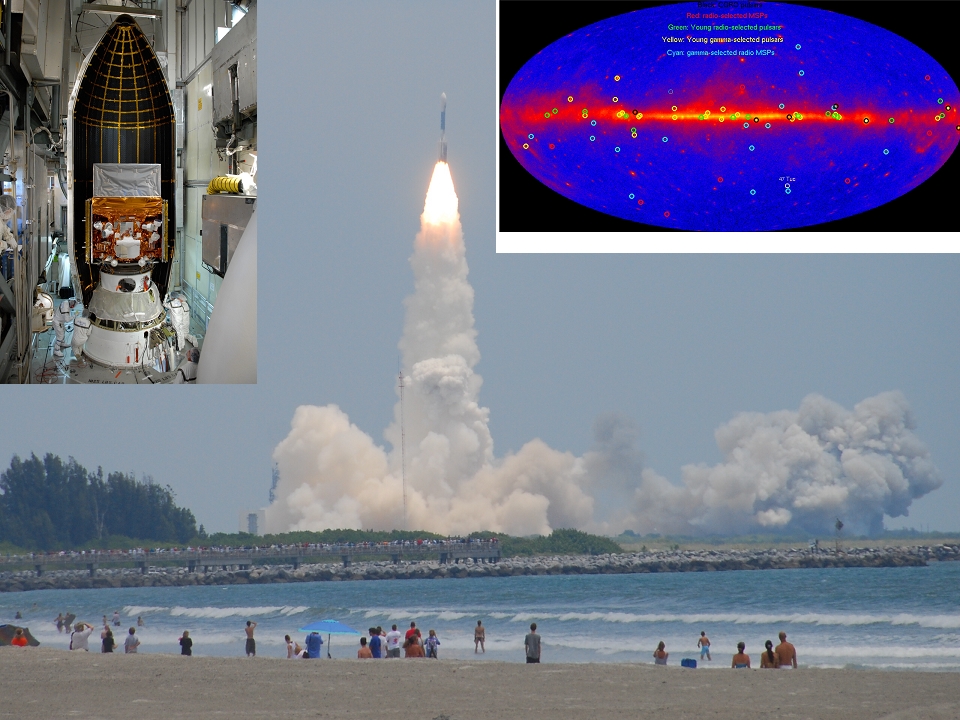Daily Image
04-02-2010Today's colloquium: Gamma-ray pulsars and their nebulae with Fermi (D. Smith, Bordeaux-Gradignan)
| Submitter: | Jean-Mathias Griessmeier |
| Description: | Before Fermi went into orbit in June, 2008, it was broadly accepted that many young gamma-ray pulsars would be discovered, beyond the six seen with EGRET. It was also clear that some would be in unidentified EGRET sources. Expectations have been surpassed: over 20 young pulsars have indeed been seen. But we have also discovered 24 new ones through gamma-pulsations alone; gamma pulsations from a dozen radio millisecond pulsars; and 17 radio MSPs at the positions of unidentified Fermi sources. Steady emission from the globular cluster 47 Tuc is most easily explained by gammas from the MSPs therein. Pulsars account for the bulk of the old EGRET mysteries in the Galactic plane. Pulsed gamma-rays turn out to come mainly from the outer magnetosphere, as opposed to the polar cap regions. Fermi has also begun to characterize the GeV emission of the many pulsar wind nebulae associated with these objects. I will summarize what we have seen and learned with Fermi to date, and touch on some of the many ongoing studies. Image above: Launch of the Fermi satellite (formerly GLAST) from Cape Canaveral, 11 June 2008. Left inset: Fermi in its faring. The Large Area Telescope (LAT) is the silver-colored block on top. Small, white elements of the Gamma Burst Monitor (GBM) can also be seen. Right inset: One-year >0.2 GeV gamma-ray sky map, showing the locations of 56 gamma-ray pulsars, 17 radio millisecond pulsars discovered at the location of LAT sources, and the globular cluster 47 Tuc, for which gamma-ray emission appears to come from the MSPs located therein. |
| Copyright: | D. Smith |
| Tweet |  |
